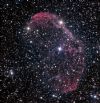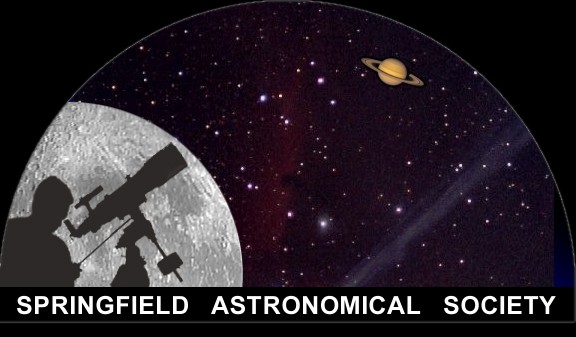
Edward Henry
7/27/2014 1:52:29 AM
Images taken with Lodestar guide cam and Lodestar Live 0.9
The Lagoon Nebula is a giant interstellar cloud in the constellation Sagittarius. It is classified as an emission nebula and as a H II region.
Distance to Earth: 4,077 light years
Magnitude: 6
| 
Edward Henry
7/27/2014 1:50:55 AM
Images taken with Lodestar guide cam and Lodestar Live 0.9
The Eagle Nebula is a young open cluster of stars in the constellation Serpens, discovered by Jean-Philippe de Cheseaux in 1745-46. Its name derives from its shape that is thought to resemble an eagle.
Distance to Earth: 7,000 light years
Magnitude: 6
Absolute magnitude: -8.21
| 
Edward Henry
7/27/2014 1:48:35 AM
Images taken with Lodestar guide cam and Lodestar Live 0.9
The Eagle Nebula is a young open cluster of stars in the constellation Serpens, discovered by Jean-Philippe de Cheseaux in 1745-46. Its name derives from its shape that is thought to resemble an eagle.
|

Edward Henry
7/27/2014 1:47:05 AM
Images taken with Lodestar guide cam and Lodestar Live 0.9
The Dumbbell Nebula is a planetary nebula in the constellation Vulpecula, at a distance of about 1,360 light years. This object was the first planetary nebula to be discovered; by Charles Messier in 1764.
| 
Jim Aldrich
7/26/2014 8:46:51 PM
This false color image of the Crescent Nebula (NGC6888) was taken through narrow band filters to reveal the light elements within. The ionized gases are energized by WR 136, a Wolf-Rayet star located near the center of the nebula. This nearby but faint emission nebula is in the constellation Cygnus at a distance of about 5000 ly.
Red is mapped to hydrogen alpha (Ha), blue to double ionized oxygen (OIII), & green to ionized sulfur (SII). 30 - 20min sub-exposures were combined to compose the photo.
Journey's End Observatory
Planewave CDK-17
Paramount ME-II
SBIG STXL-11002M Camera
SBIG STXL-FW8G Guided Filter Wheel
AO-X Adaptive Optics
| 
Jim Aldrich
7/26/2014 8:42:32 PM
This image of the Crescent Nebula (NGC6888) was taken through Luminous, Red, Green, & Blue (LRGB) filters to produce a color image. About 40 - 10min sub-exposures were combined to create the picture.
Journey's End Observatory
Planewave CDK-17
Paramount ME-II
SBIG STXL-11002M Camera
SBIG STXL-FW8G Guided Filter Wheel
AO-X Adaptive Optics
|

Jim Aldrich
7/4/2014 2:02:02 AM
Here is a quick shot of the visual conjunction of asteroids Vesta & Ceres. The evening of July 3, 2014 they appear only 12 arc minutes apart or .2 degrees. They are passing two spiral galaxies low to the West. Ceres is the largest asteroid (minor planet) and Vesta is the brightest because it is closer to earth. This 4 min exposure was the best of ten images.
Journey's End Observatory
Planewave CDK-17
Paramount ME-II
SBIG STXL-11002M Camera
SBIG STXL-FW8G Guided Filter Wheel
AO-X Adaptive Optics
| 
Jim Aldrich
5/7/2014 2:14:55 PM
NGC 5248 is part of the Virgo Super Cluster. This galaxy shines at mag 11 and is about 59mly from us. Close to 9 hours of imaging through LRGB filters was taken to produce the photo. Most of the data was acquired during windy & and below average seeing conditions.
Journey's End Observatory
Planewave CDK-17
Paramount ME-II
SBIG STXL-11002M Camera
SBIG STXL-FW8G Guided Filter Wheel
AO-X Adaptive Optics
| 
Patrick Holland
5/4/2014 8:44:47 PM
An image of the moon, taken on 5-3-14 using the 10" Meade LX200 ACF scope, Celestron Skyris 274 camera w/badder HA filter. Best 450 frames.
|

Patrick Holland
5/2/2014 3:36:51 PM
The Sun in Calcium K, taken with a Astro-telescope 102mm F/11, Lunt Cak B1200 Module, Grasshopper 3 camera, 124 frames stacked in Registax and processed in Photoshop CS3.
|
